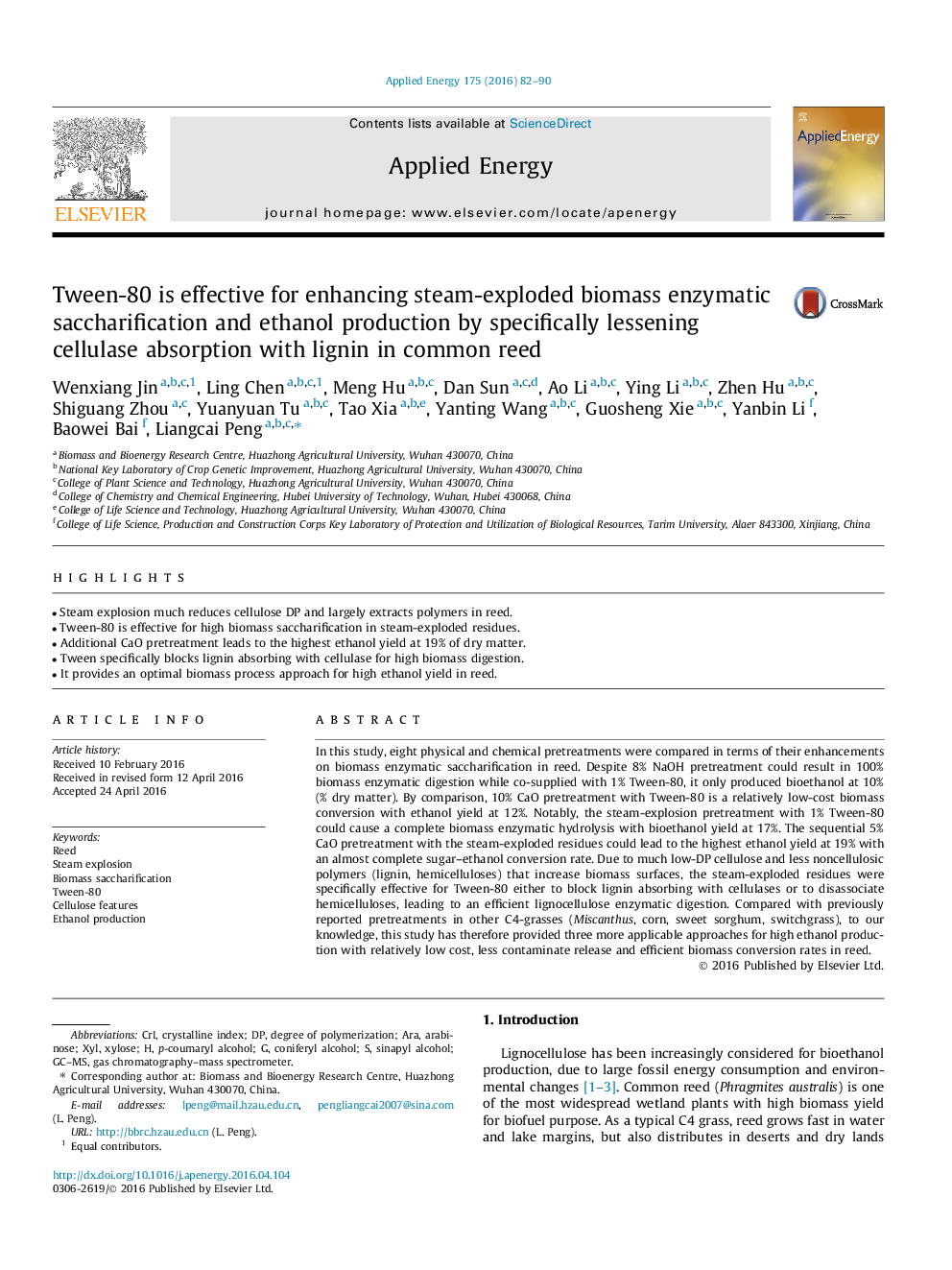| Article ID | Journal | Published Year | Pages | File Type |
|---|---|---|---|---|
| 6682925 | Applied Energy | 2016 | 9 Pages |
Abstract
In this study, eight physical and chemical pretreatments were compared in terms of their enhancements on biomass enzymatic saccharification in reed. Despite 8% NaOH pretreatment could result in 100% biomass enzymatic digestion while co-supplied with 1% Tween-80, it only produced bioethanol at 10% (% dry matter). By comparison, 10% CaO pretreatment with Tween-80 is a relatively low-cost biomass conversion with ethanol yield at 12%. Notably, the steam-explosion pretreatment with 1% Tween-80 could cause a complete biomass enzymatic hydrolysis with bioethanol yield at 17%. The sequential 5% CaO pretreatment with the steam-exploded residues could lead to the highest ethanol yield at 19% with an almost complete sugar-ethanol conversion rate. Due to much low-DP cellulose and less noncellulosic polymers (lignin, hemicelluloses) that increase biomass surfaces, the steam-exploded residues were specifically effective for Tween-80 either to block lignin absorbing with cellulases or to disassociate hemicelluloses, leading to an efficient lignocellulose enzymatic digestion. Compared with previously reported pretreatments in other C4-grasses (Miscanthus, corn, sweet sorghum, switchgrass), to our knowledge, this study has therefore provided three more applicable approaches for high ethanol production with relatively low cost, less contaminate release and efficient biomass conversion rates in reed.
Keywords
Related Topics
Physical Sciences and Engineering
Energy
Energy Engineering and Power Technology
Authors
Wenxiang Jin, Ling Chen, Meng Hu, Dan Sun, Ao Li, Ying Li, Zhen Hu, Shiguang Zhou, Yuanyuan Tu, Tao Xia, Yanting Wang, Guosheng Xie, Yanbin Li, Baowei Bai, Liangcai Peng,
